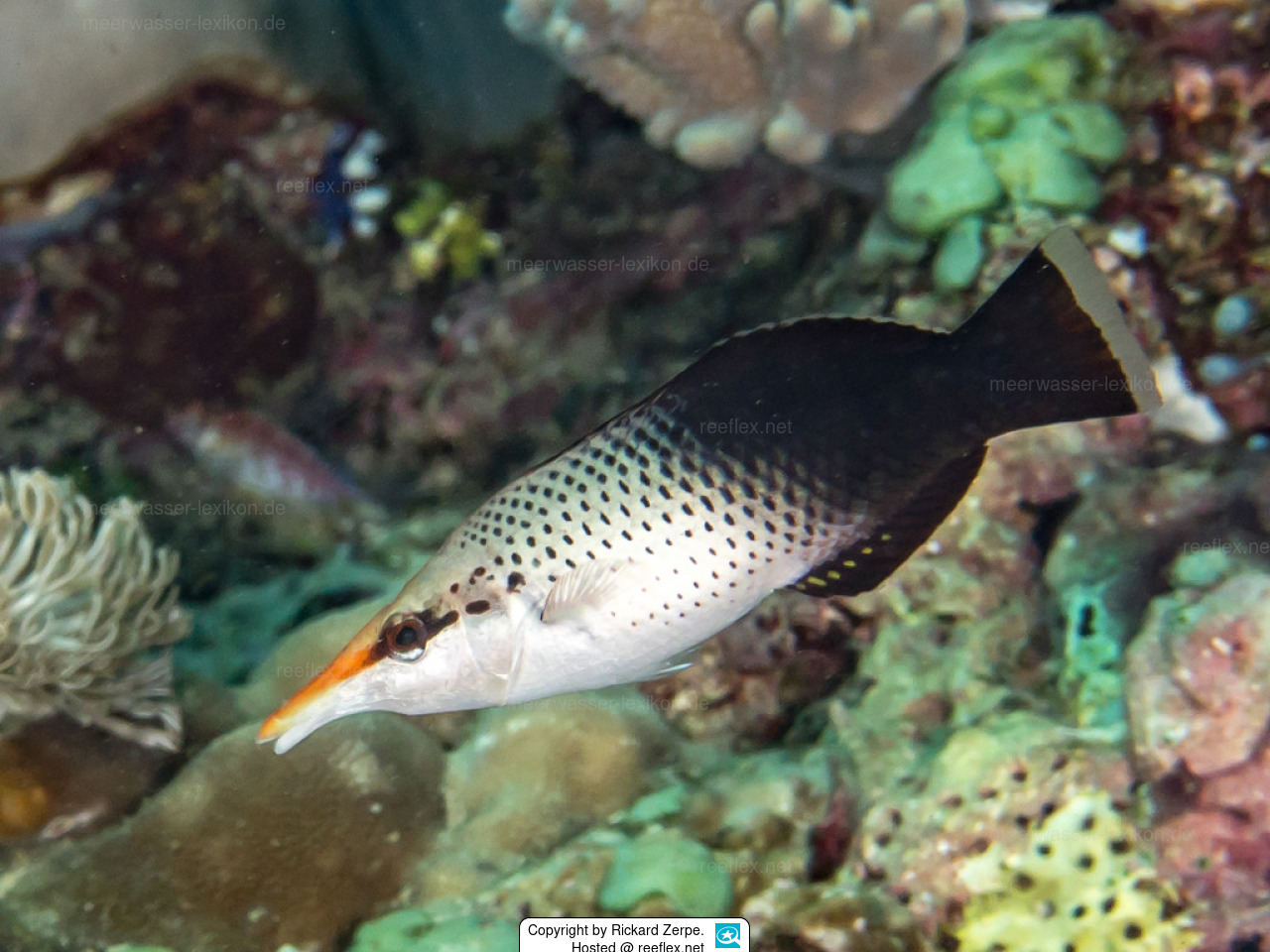Info
Gomphosus varius Lacepède, 1801
Synonymised names
Gomphorus varius Lacepède, 1801 · unaccepted (misspelling)
Gomphosus tricolor Quoy & Gaimard, 1824 · unaccepted
Jumping guard
A jumping guard prevents (nocturnal) fish from jumping out.
Wrasses, blennies, hawkfishs and gobies jump out of an unprotected tank in fright if their night rest is disturbed, unfortunately these jumpers are found dried up in the morning on carpets, glass edges or later behind the tank.
https://www.korallenriff.de/en/article/1925_5_Jump_Protection_Solutions_for_Fish_in_the_Aquarium__5_Net_Covers.html
A small night light also helps, as it provides the fish with a means of orientation in the dark!
Synonymised names
Gomphorus varius Lacepède, 1801 · unaccepted (misspelling)
Gomphosus tricolor Quoy & Gaimard, 1824 · unaccepted
Jumping guard
A jumping guard prevents (nocturnal) fish from jumping out.
Wrasses, blennies, hawkfishs and gobies jump out of an unprotected tank in fright if their night rest is disturbed, unfortunately these jumpers are found dried up in the morning on carpets, glass edges or later behind the tank.
https://www.korallenriff.de/en/article/1925_5_Jump_Protection_Solutions_for_Fish_in_the_Aquarium__5_Net_Covers.html
A small night light also helps, as it provides the fish with a means of orientation in the dark!







 Rickard Zerpe, Schweden
Rickard Zerpe, Schweden
















